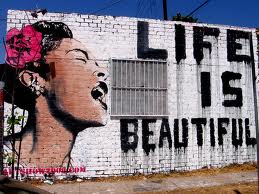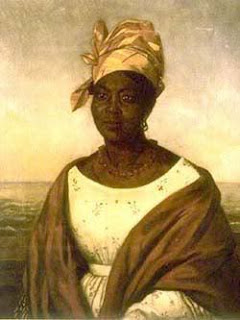The British afro Hair Care industry is worth approximately 4.2 billion today, there are 27 British Black Owned Hair Care Brands currently in the UK.
Hair care for blacks over the years for me has been a difficult topic, as a child I had no idea how to look after my hair and spent much of my childhood with a short back and sides or an afro, the only place I could buy black hair products was the Arndale in Manchester and during my late teens spent a lot of time relaxing my hair.
On moving to Hereford I found buying black hair care products extremely difficult and could only buy my hair care products from Gloucester 30 miles away or having a trip to Birmingham, I soon learned that braiding my hair was a better option.
For many years my hair remained braided until I moved back to Manchester where access to black hair care products was much easier and eventually the internet revolution made buying black hair care products as easy as a quick click of a mouse and the range of products overwhelming.
For the past 15 years I have been natural, choosing to stay away form all chemical processes and braiding and just wearing my hair as it comes and felt very comfortable in doing so, as my identity as a black woman has evolved, so has my confidence in having my natural born hair on display.
The history of Black Hair is a contentious issue for blacks and there is a movement called 'Natural Hair Movement', The natural hair movement is focused on encouraging women with African
ancestry to celebrate and enjoy the natural characteristics of their
kinky, curly, hair texture.
In the 20th century, hair for
Africans represented an individual’s age, ethnicity, religion, social
rank and status. Hair was taken groomed for those who understood social
standards and implications within the community, as it was significant.
Going into the African diaspora,
Afro hair was usually dressed according to the local culture. For
example in the 1960s, the Afro hair was represented as a political
statement, it became a symbol for the Black movement in
America and UK. The Afro represented Black power and integration in American
and UK political systems. Black women had many Eurocentric features and
hairstyles and during the movement the black communities created their
own standard of beauty. Hair then became their main icon which was a way
of challenging white-dominated mainstream media. During these times
Afro hair was distinguishable and an expression of Black pride, thus not
supporting societal norms.
Kathleen Cleaver of the Black Panthers explains here:-
More can be read about the Black Hair Movement of the 60's here.
To understand this train of thought you have to go back further in history, as I stated further up in this essay, in the 20th Century hair for Africans represented many things amongst them social rank and status so hair was an important part of an Africans identity.
In the 18th Century, British colonists deemed African hair as closer to sheep wool than human hair, setting the precedent that white hair is preferable — or good,
a racially charged notion in and of itself. After the emancipation of
slavery, many black Americans sought to straighten their hair to fit in. Madame C.J. Walker, the first black female millionaire, made her fortune selling products meant to straighten black hair as a way to help black women get ahead in society by fitting in aesthetically.
Even today the hatred of black hair goes beyond ignorant comments. In fact,
embracing natural hair can lead some women and men to lose their jobs or
face punishment at school. In March 2014, the U.S. Army issued a new policy
that banned traditional black hairstyles, including cornrows, twists
and dreadlocks. The regulations even described these styles “unkempt”
and “matted.” After months of backlash and a letter from the
Congressional Black Caucus, then-Defense Secretary Chuck Hagel reviewed
and subsequently rolled back the policy.
This is not confined to USA but also here in UK even recently as September of 2017 (this year) a boy was sent home from school for having Dreadlocks (see here) in January 2017 a woman was reported to have been told she could not have a job in Harrods if her hair was not straightened (see here)
White's have mandated appearance codes for blacks dictating how Black women should wear their for a very long time, the earliest, South Carolina's Negro Act of 1735, specifically set a standard of dress for the enslaved and free African Americans" (ibid. 132). In 1740 amendments, South Carolina's slave code further elaborated the dress regulations (Genovese, 1974:359). In 1786, while Louisiana was a Spanish colony, the governor enacted a dress code which forbade: females of colour to wear plumes or jewelry; this law specifically required their hair bound in a kerchief (Crete, 1981: 80-81; also Gayarre, 1885: 178-179 and Wares, 1981:135). (More info here)
The Tignon Law
This headdress was the result of sumptuary laws passed in 1786 under the administration of Governor Esteban Rodriguez Miró. Called the tignon laws, they prescribed and enforced appropriate public dress for female gens de couleur in colonial society. At this time in Louisiana history, women of African descent vied with white women in beauty, dress and manners. One of their most standout physical attributes that separated them from their white female counterparts was their hair. Women of African descent would often adorn their hair with colorful jewelry, beads and other accents, demonstrating an exotic appearance which attracted the attention of white male suitors. Many of them had become the girlfriends and placées (openly kept mistresses) of white, French, and Spanish Creole men. This perceived threat to white women's relationships with French and Spanish Creole men incurred the jealousy and anger of their wives, mothers, sisters, daughters and fiancées. (Wikipedia)
This internalized negative images carried through black generations created from involuntary lives in a white supremacist culture. Some of these codes were so specific that they targeted the types of patterns and clothes that black people were able to wear, citing them as an effort to help newly freed blacks “fit in” with their new environment. All the while, the codes continued to limit the freedom of identity and cultural expression that had been stifled through enslavement.
Throughout the history of Africa, hair has played an important part of the cultures, there are over 2000 distinct ethno-linguistic groups in Africa, the diaspora may be far removed but hold their roots in this important tradition and I feel it is a beautiful thing that despite the oppression and the turbulent journeys these generations of Africans have been forced through down the ages hair is still plays an important if not political role today.
To finish please enjoy this beautiful website of Hair Styles in African Culture (Here)
To finish please enjoy this beautiful website of Hair Styles in African Culture (Here)







No comments:
Post a Comment